Your cart is currently empty!
Month: July 2024
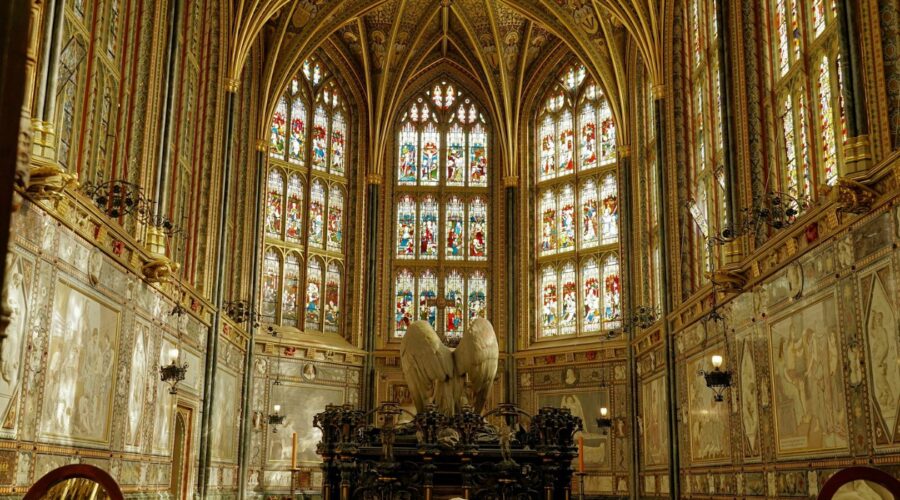
Explore the Ark of Grace Ministries: A Comprehensive Guide
Introduction
The Ark of Grace Ministries is a non-profit organization dedicated to providing spiritual guidance, support, and resources to individuals seeking a deeper connection with God. Established in the belief that every soul has the potential for grace and redemption, the ministry aims to empower people from all walks of life.
Values and Mission
Values:
- Compassion
- Acceptance
- Hope
- Restoration
Mission:
- To share the love and grace of God through Jesus Christ.
- To provide encouragement, guidance, and support to individuals seeking spiritual growth.
- To foster a community of believers where individuals can connect, learn, and grow together.
Programs and Services
The Ark of Grace Ministries offers a range of programs and services designed to meet the spiritual needs of its members and the wider community:
Biblical Studies:
- Weekly Bible Study Groups
- Online Bible Studies
- Bible Conferences
Worship Services:
- Sunday Worship Services
- Prayer Meetings
- Special Worship Events
Counseling and Support:
- Pastoral Counseling
- Family Counseling
- Grief Support Groups
Outreach Programs:
- Street Ministry
- Prison Ministry
- Community Service Initiatives
Leadership and Staff
The Ark of Grace Ministries is led by a team of experienced pastors, counselors, and volunteers who are committed to providing compassionate and effective care to all who seek it.
Senior Pastor: John Smith
Associate Pastor: Jane Doe
Counseling Director: Dr. Sarah Jones
Location and Contact Information
The Ark of Grace Ministries is located at:
123 Main Street
Anytown, CA 12345
Phone: (123) 456-7890
Website: www.arkofgraceministries.org
Connect with the Community
The Ark of Grace Ministries invites individuals to connect with the community through various social media platforms:
Conclusion
The Ark of Grace Ministries is a welcoming and transformative community that offers a haven for spiritual growth and healing. Through its diverse programs, compassionate staff, and outreach initiatives, the ministry empowers individuals to discover God’s love and experience the power of redemption.
Whether you are seeking spiritual guidance, a supportive community, or simply a deeper connection with God, the Ark of Grace Ministries invites you to explore its offerings and find a place where you can thrive.
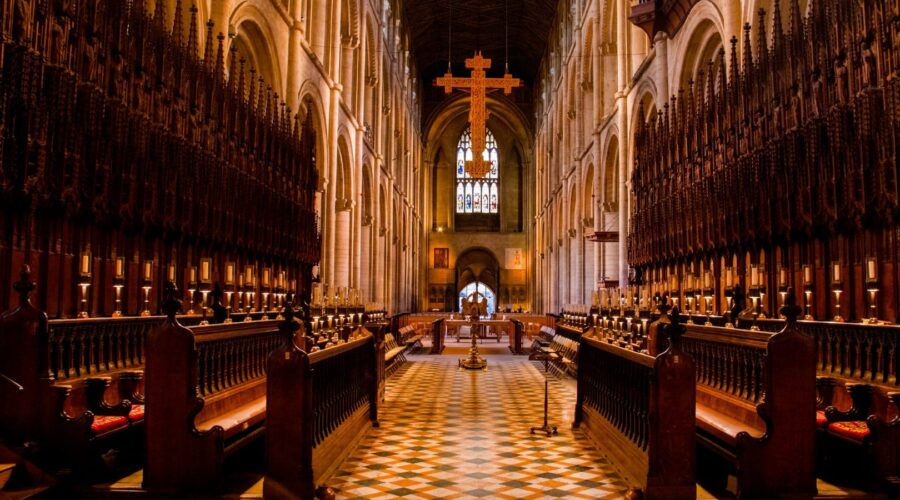
Apostolic Faith WECA: Exploring the History, Beliefs, and Practices
Introduction
The Apostolic Faith West East Central Africa (WECA) is a vibrant and wide-reaching charismatic Pentecostal denomination with a presence in numerous countries across Africa. This blog post aims to provide a thorough overview of the history, beliefs, and practices of this influential religious movement.
Historical Overview
Origins: The Apostolic Faith WECA traces its roots to the Apostolic Faith Mission, which began in Los Angeles, California in 1906. Missionaries from this movement arrived in East Africa in the early 1900s and established churches in Kenya, Tanzania, and Uganda.
Spread and Growth: Over the ensuing decades, the Apostolic Faith WECA spread rapidly throughout the region, reaching cities and remote villages alike. By the mid-1900s, it had become one of the largest and most influential Pentecostal denominations in Africa.
Name Change and Expansion: In 1986, the name of the denomination was changed to Apostolic Faith WECA to reflect its broad scope and expansion beyond East Africa.
Beliefs and Doctrines
The Apostolic Faith WECA adheres to a set of core beliefs, including:
- The Triune God:
One God existing in three persons: the Father, Son, and Holy Spirit.
- The Bible:
The Bible is the inspired and infallible word of God.
- Salvation:
Salvation is received through faith in Jesus Christ as the only way to eternal life.
- Baptism by Immersion:
Water baptism is a sacrament that symbolizes the believer’s identification with Christ’s death and resurrection.
- The Holy Spirit:
The Holy Spirit is the third person of the Trinity, who empowers believers for witness, worship, and service.
- Speaking in Tongues:
Speaking in tongues is a spiritual gift that is a sign of the baptism of the Holy Spirit.
Practices
The Apostolic Faith WECA emphasizes a vibrant and experiential form of worship, which includes:
- Prayer and Supplication:
Prayer is a central component of the church’s services and daily life.
- Worship Music:
Worship services are marked by uplifting and energetic music, often accompanied by drums and dancing.
- Preaching and Teaching:
Sermons and Bible studies focus on the practical application of Christian principles.
- Healing and Deliverance:
The church believes in divine healing and often conducts prayer services for the sick.
- Outreach and Evangelism:
The Apostolic Faith WECA actively engages in outreach and mission work, including evangelistic campaigns and social service programs.
Organization and Leadership
The Apostolic Faith WECA is organized into a hierarchical structure, with a General Superintendent overseeing the denomination’s global operations. Each region and country has its own leadership and structure.
Leaders in the church are typically ordained ministers who have undergone extensive theological training. They are responsible for providing pastoral care and spiritual guidance to the congregation.
Impact and Influence
The Apostolic Faith WECA has a significant impact on African society and has played a role in:
- Spiritual Renewal: The church’s vibrant worship and emphasis on the Holy Spirit have brought spiritual renewal to many communities.
- Social Transformation: The church’s outreach programs have addressed social issues such as poverty, education, and healthcare.
- Economic Empowerment: The church has established businesses and cooperatives to promote economic development.
Conclusion
The Apostolic Faith WECA is a vibrant and influential Pentecostal denomination with a rich history and a commitment to spiritual growth, community outreach, and social transformation. Its core beliefs and practices continue to shape the lives of millions of believers across Africa.
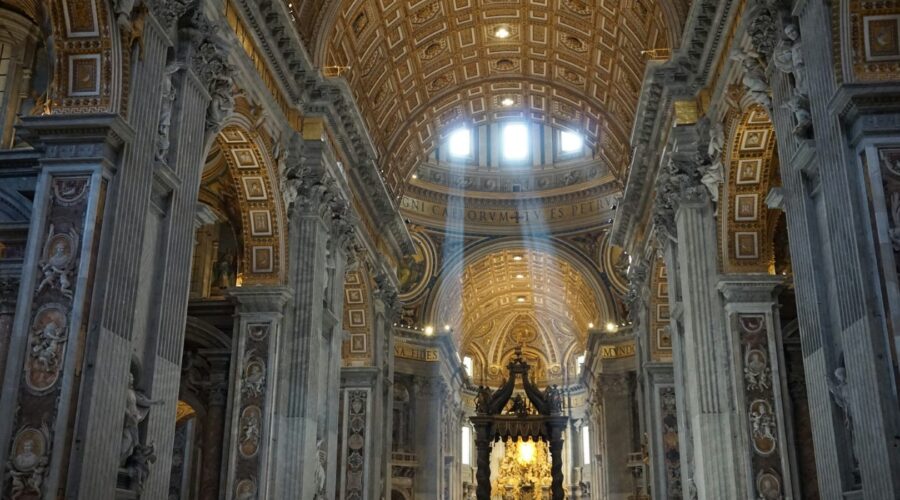
Discover the Rich Heritage and Traditions of Antiochian Orthodoxy
Welcome to the vibrant and ancient realm of Antiochian Orthodoxy, a branch of Christianity with a rich history and unwavering commitment to preserving its traditions. This comprehensive guide will delve into the captivating world of Antiochian Orthodoxy, exploring its unique characteristics, practices, and enduring legacy.
The Roots of Antiochian Orthodoxy
The roots of Antiochian Orthodoxy can be traced back to the bustling metropolis of Antioch, Syria, where some of the earliest Christian communities emerged. According to tradition, the Church of Antioch was founded by none other than the Apostle Peter, who ordained Evodius as its first bishop.
Over the centuries, the Church of Antioch spread throughout the Middle East, North Africa, and Europe, becoming one of the five major patriarchates of the Eastern Orthodox Church. Its unique theological perspectives and liturgical practices set it apart from other Christian denominations.
Key Characteristics of Antiochian Orthodoxy
Antiochian Orthodoxy is characterized by its distinctive:
- Emphasis on Tradition: Adherence to the teachings of the early Church Fathers and the Holy Tradition, which includes both written and unwritten sources.
- Sacramental Theology: Belief in the sacramental nature of God’s grace, dispensed through the seven sacraments, such as Baptism, Eucharist, and Confession.
- Liturgical Spirituality: A strong emphasis on liturgical worship, with elaborate rituals and prayers that engage all the senses.
Practices and Beliefs
Worship and Liturgy
Antiochian Orthodox worship is a multi-sensory experience that immerses worshippers in the timeless beauty of tradition. The Divine Liturgy, the central act of worship, is celebrated on Sundays and major feast days. It consists of:
- Procession of the Gospel: The reading of the Gospel from the altar.
- Eucharist: The consecration and distribution of bread and wine, representing the body and blood of Christ.
- Intercessions and Prayers: Time for petitions and prayer for the living and the dead.
Sacraments
Antiochian Orthodoxy recognizes seven sacraments, each believed to convey divine grace:
- Baptism: Immersion in water, symbolizing cleansing and new birth.
- Chrismation: Anointing with Holy Chrism, confirming the newly baptized into the faith.
- Eucharist: Receiving the bread and wine of the Divine Liturgy, seen as partaking of the body and blood of Christ.
- Penance: Confession of sins to a priest, followed by absolution and reconciliation.
- Anointing of the Sick: Prayer and anointing with Holy Oil for healing and strengthening.
- Holy Orders: Ordination into the priesthood or diaconate.
- Marriage: Blessing and uniting of a man and woman in the presence of God.
Monasticism and Spirituality
Monasticism plays a significant role in Antiochian Orthodoxy. Monks and nuns dedicate their lives to prayer, contemplation, and service, seeking spiritual perfection through:
- Prayer and Worship: Daily prayer services, including the Divine Office and the Jesus Prayer.
- Asceticism: Practice of self-denial, including fasting, vigils, and manual labor.
- Obedience: Submission to the authority of an abbot or abbess.
Contribution to Christianity
Antiochian Orthodoxy has made significant contributions to the development of Christianity, including:
- The Antiochene School of Theology: A renowned center of theological learning that influenced the development of early Christian doctrine.
- Liturgical Innovations: Antioch was instrumental in shaping the structure and content of Orthodox Christian liturgy.
- Missionary Activity: Antiochian missionaries played a vital role in spreading Christianity throughout the Middle East and beyond.
Conclusion
Antiochian Orthodoxy is a vibrant and enduring branch of Christianity, rich in tradition, sacraments, and spiritual practices. Its ancient roots and unwavering commitment to the teachings of the early Church continue to shape the faith of millions of believers around the world. Whether you are a devout follower or simply curious about this fascinating religion, we encourage you to delve deeper into the captivating world of Antiochian Orthodoxy.
Bishoprics of the Antiochian Orthodox Archdiocese of North America Bishopric Diocesan Bishop New York and Washington, D.C. Archbishop Michael Toledo and the Midwest Bishop Anthony Los Angeles and the West Bishop Joseph Boston Bishop Thomas Ottawa Bishop Ina Edmonton Bishop Daniel Colombia and Venezuela Bishop Silvan Additional Resources:
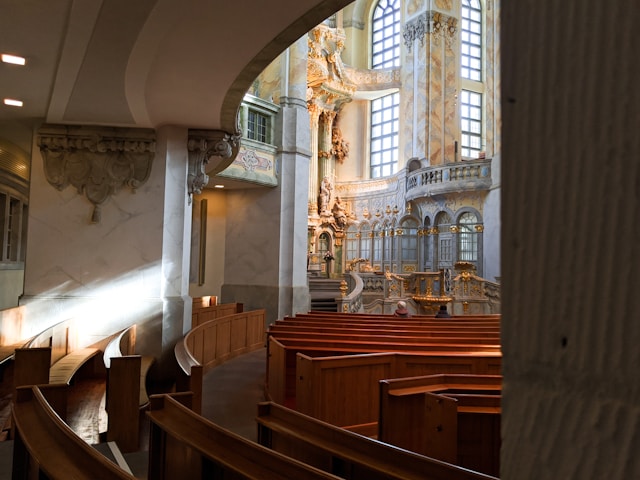
Discover the Fulfilling World of Apostolate: A Comprehensive Guide for Catholics
Introduction
Apostolate refers to the mission entrusted to all baptized Catholics to witness and share their faith with others. It encompasses a wide range of activities aimed at spreading the Gospel, fostering spiritual growth, and serving the community. This guide provides a comprehensive overview of apostolate, its importance, forms, and practical tips for effective engagement.
Importance of Apostolate
- Fulfills the Baptismal Call: Baptism empowers us to share in Christ’s mission of evangelization.
- Spreads the Good News: Apostolate helps proclaim the Gospel to those who have not yet encountered Christ.
- Strengthens Faith: Engaging in apostolate deepens our own understanding and appreciation of our faith.
- Catechesis and Evangelization: Teaching and sharing the Catholic faith through classes, workshops, and outreach programs.
- Spiritual Direction and Pastoral Care: Providing guidance, support, and encouragement to individuals seeking spiritual growth.
- Social Justice and Advocacy: Working to address social issues and promote justice and equality in alignment with Catholic social teaching.
- Liturgical and Sacramental Ministry: Assisting in parish liturgies, administering sacraments, and leading prayer groups.
- Ecumenical and Interfaith Dialogue: Building bridges with other Christian denominations and faith traditions.
- Personal Growth: Engaging in apostolate fosters humility, compassion, and a deeper connection with Christ.
- Community Building: Apostolate initiatives bring people together, strengthening bonds and promoting unity.
- Evangelization: Sharing the Gospel with others has the potential to transform lives and bring people closer to God.
- Renewal of the Church: Apostolate revitalizes the Church by infusing it with missionary zeal and transformative energy.
- Prayer and Discernment: Seek God’s guidance and discern your specific role in the apostolate.
- Formation and Training: Engage in ongoing formation and training to enhance your knowledge and skills.
- Collaboration: Work together with other Catholics and organizations to maximize impact.
- Cultural Sensitivity: Respect and adapt to different cultural and social contexts when sharing the Gospel.
- Patience and Perseverance: Apostolate is a marathon, not a sprint. Be patient and persistent in your efforts.
li>Transforms Communities: Apostolate initiatives empower and uplift individuals, building stronger and more compassionate communities.
Forms of Apostolate
Apostolate can take many forms, including:
Lay Apostolate
All baptized members of the Church, regardless of their ordination status, have a responsibility to participate in the apostolate. Lay apostolate is especially crucial in secular and modern contexts where religious institutions may have limited reach.
Benefits of Engaging in Apostolate
Tips for Effective Apostolate
Conclusion
Apostolate is an essential aspect of Catholic life that empowers us to fulfill our baptismal call, share the Gospel, and transform the world. By engaging in apostolate, we not only proclaim the Good News but also deepen our own faith, build stronger communities, and contribute to the renewal of the Church. Remember, the journey of apostolate is one of joy, growth, and service, where we encounter Christ in those we serve and make a meaningful difference in the world.
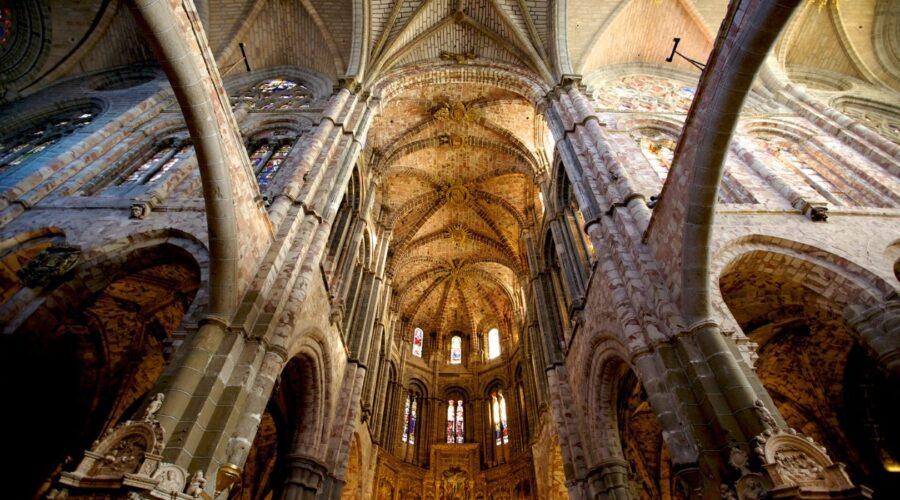
Discover the Enchanting Annunciation Greek Orthodox Church: A Spiritual and Historical Haven

Nestled in the heart of Milwaukee, Wisconsin, the Annunciation Greek Orthodox Church stands as a testament to faith, history, and architectural brilliance. This magnificent edifice has been a beacon of spirituality and a cornerstone of the Greek community for over a century, captivating visitors with its stunning beauty and profound historical significance.
History: A Journey Through Time
The Annunciation Greek Orthodox Church traces its roots back to the late 19th century, when a small group of Greek immigrants gathered to form a congregation in Milwaukee. In 1904, they acquired a modest building that served as their first church home. As the community grew, a grander and more permanent structure was needed.
In 1918, the congregation commissioned the renowned architect Frank Lloyd Wright to design a new church that would reflect the Byzantine heritage and architectural traditions of Greece. Wright’s design, which combined classical elements with modern innovations, was a bold and visionary departure from the typical church architecture of the time.
The cornerstone of the new church was laid in 1923, and the building was completed in 1926. The Annunciation Greek Orthodox Church has since become a designated Milwaukee Landmark, recognized for its architectural significance and its role in shaping the city’s cultural landscape.
Architecture: A Symphony of Styles
The Annunciation Greek Orthodox Church is a masterpiece of architectural fusion, seamlessly blending elements from different eras and cultures. Wright’s design is a testament to his architectural genius, creating a structure that is both aesthetically pleasing and spiritually uplifting.
Byzantine Influences:
- Geometric patterns and mosaic decorations
- Domed roof and arched windows
- Iconography and religious symbols
Modernist Innovations:
- Clean lines and geometric shapes
- Concrete construction and cantilevered balconies
- Extensive use of glass and natural light
Interior: A Sanctuary of Beauty
Stepping inside the Annunciation Greek Orthodox Church is a truly awe-inspiring experience. The interior is a symphony of colors, textures, and intricate details that create a sacred and immersive atmosphere.
Iconography:
- Depictions of Christ, the Virgin Mary, and saints
- Traditional Byzantine iconography with gold leaf and rich colors
- Icons adorn the walls, ceilings, and iconostasis
Mosaics:
- Vibrant and colorful mosaics depicting biblical scenes
- Geometric and floral patterns add to the visual richness
- Mosaics found in the sanctuary, narthex, and other areas
Frescoes:
- Large-scale paintings portraying religious narratives
- Traditional fresco technique with pigments and wet plaster
- Frescoes adorn the interior walls and ceilings
Community: A Spiritual Hub
Beyond its architectural splendor, the Annunciation Greek Orthodox Church is a vibrant and active community center. It offers a wide range of programs and services that cater to the spiritual, social, and educational needs of its members and the broader community.
- Worship: Daily services, Sunday Liturgy, and special religious observances
- Education: Sunday School, Greek language classes, and adult education programs
- Social events: Festivals, cultural gatherings, and community outreach initiatives
- Philoptochos Society: A philanthropic organization that supports local charities and community members in need
Visiting the Annunciation Greek Orthodox Church
If you are planning to visit the Annunciation Greek Orthodox Church, here are a few tips to ensure a meaningful and memorable experience:
- Respectful dress: Modest attire that covers shoulders and knees is recommended.
- Photography restrictions: Photography is not permitted during worship services or inside the sanctuary.
- Guided tours: Guided tours are available upon request and provide a deeper understanding of the church’s history and architecture.
- Mass: Sunday Liturgy is held at 10:00 AM and is open to all.
Conclusion
The Annunciation Greek Orthodox Church is a remarkable testament to the power of faith, the beauty of architecture, and the strength of community. Standing proudly in the heart of Milwaukee for over a century, it continues to inspire and uplift visitors with its timeless beauty and enduring spiritual presence. Whether you are a seeker of spirituality, an admirer of architecture, or simply curious to explore the rich cultural heritage of Milwaukee, the Annunciation Greek Orthodox Church is a destination that promises to leave a lasting impression.
Additional Information
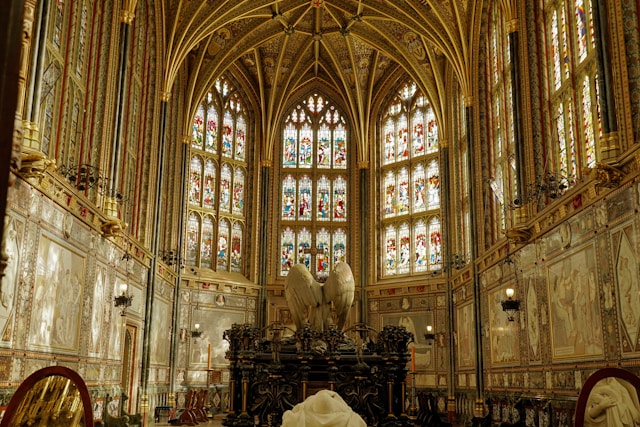
Discover the Annunciation Church: A Time-Honored Symbol of Faith and Beauty
Introduction
The Annunciation Church, located in Nazareth, Israel, holds a profound significance for Christians worldwide. It is believed to be the site where the angel Gabriel appeared to Mary, announcing the impending birth of Jesus Christ. Over centuries, the church has undergone numerous transformations and witnessed countless acts of devotion.
Historical Significance
Biblical Origins
The Annunciation Church traces its origins back to the 4th century AD, when Saint Helena, the mother of Emperor Constantine, visited Nazareth and identified it as the location of the Annunciation. As a result, she ordered the construction of a basilica on the site.
Crusader Era
During the Crusader era (11th-13th centuries), the church underwent significant renovations and expansions. The Crusaders transformed the basilica into a large, fortified structure and added a new chancel and apse.
Ottoman and British Periods
After the fall of the Crusader kingdom, the church was converted into a mosque by the Ottoman Empire. In the 19th century, it was purchased by the Franciscan Order and restored to its original purpose, becoming a Catholic sanctuary once more.
Architectural Splendor
Exterior Design
The Annunciation Church is an impressive example of Gothic Revival architecture. Its exterior features a combination of white limestone and red sandstone, creating a striking and distinctive appearance. The facade is dominated by a large rose window, intricate carvings, and a bell tower.
Interior Layout
The interior of the church boasts a spacious nave, supported by pointed arches and ribbed vaults. The walls are adorned with vibrant frescoes depicting scenes from the life of Christ and the Annunciation. The sanctuary is particularly ornate, featuring a gilded altarpiece and a magnificent stained-glass window.
Devotional Significance
Marian Pilgrimage Site
The Annunciation Church is a major pilgrimage site for Catholics, especially during the Feast of the Annunciation (March 25th). Pilgrims come from around the world to venerate the spot where the angel Gabriel greeted Mary.
Interfaith Dialogue
The Annunciation Church also serves as a symbol of interfaith dialogue. The church is open to visitors of all faiths, and it has been the site of numerous encuentros (encounters) between Christian and Muslim leaders.
Practical Information
Address and Location
- Annunciation Church
- Basilica Street, Nazareth, Israel
Visiting Hours
- Monday-Saturday: 8:00 AM – 12:00 PM, 2:00 PM – 5:00 PM
- Sunday: 8:00 AM – 12:00 PM, 4:00 PM – 7:00 PM
Tips for Visitors
- Respect the religious significance of the site.
- Dress modestly and cover your shoulders and knees.
- Take your time to explore the church and appreciate its beauty.
Conclusion
The Annunciation Church represents a testament to the enduring legacy of the Christian faith and a symbol of interfaith harmony. Its architectural splendor, devotional significance, and historical importance make it a must-visit destination for pilgrims and travelers alike. As visitors step into the church, they are transported to a place where history, faith, and beauty intertwine, leaving an unforgettable mark on their souls.
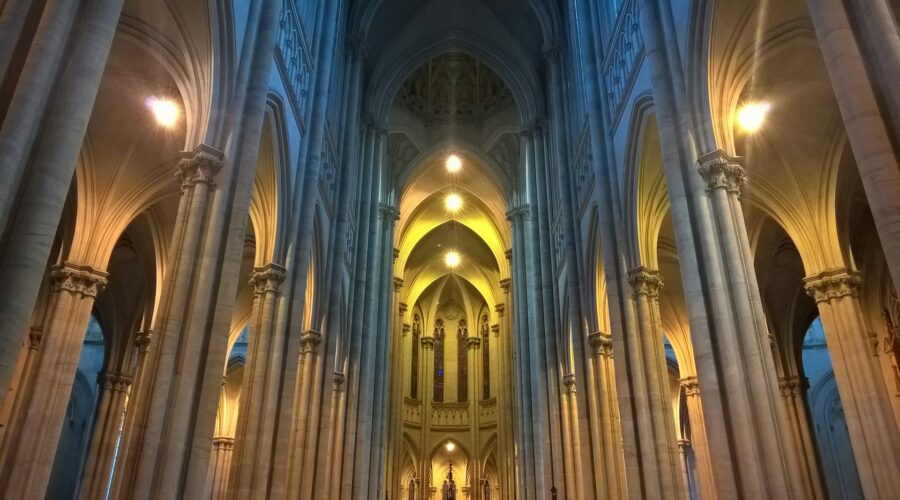
Anglican Ink: A Comprehensive Guide to Anglican Church History, Beliefs, and Practices
Anglican ink is a term used to describe the official documents and writings of the Anglican Church. These documents include the Book of Common Prayer, the Thirty-Nine Articles, and the Canons of the Church of England. Anglican ink is an important source of information about the history, beliefs, and practices of the Anglican Church.
History of Anglican Ink
The first Anglican document was the Book of Common Prayer (BCP), which was compiled in 1549. The BCP is a collection of liturgical texts that are used for services in the Anglican Church. The BCP has been revised several times over the centuries, but it remains the foundation of Anglican worship.
The Thirty-Nine Articles were adopted in 1563 and are a statement of the doctrinal beliefs of the Anglican Church. The Articles are based on the Lutheran Augsburg Confession and the Calvinist Westminster Confession. The Articles have been interpreted in a variety of ways over the centuries, but they remain an important part of Anglican theology.
The Canons of the Church of England were adopted in 1604 and are a set of laws that govern the Anglican Church. The Canons have been revised several times over the centuries, but they remain the basis of church order in the Anglican Church.
Beliefs of the Anglican Church
The Anglican Church is a Protestant church that is based on the teachings of the Bible. The Anglican Church believes that the Bible is the inspired word of God and that it is the sole authority for faith and practice. The Anglican Church also believes in the three creeds of the Christian faith: the Apostles’ Creed, the Nicene Creed, and the Athanasian Creed.
The Anglican Church has a number of distinctive beliefs that set it apart from other Protestant churches. These beliefs include:
- The Anglican Church believes in the episcopacy, which is a system of church government in which bishops have oversight of the church.
- The Anglican Church believes in the sacraments of baptism and Holy Communion. The Anglican Church also believes that the sacraments are not merely symbolic, but that they are actually means of grace.
- The Anglican Church believes in the priesthood of all believers. This means that all baptized Christians are called to participate in the ministry of the church.
Practices of the Anglican Church
The Anglican Church has a number of distinctive practices that set it apart from other Protestant churches. These practices include:
- The Anglican Church uses a liturgical form of worship. This means that the services of the church are based on a set order of prayers and readings.
- The Anglican Church uses a variety of music in its worship services. This music includes hymns, anthems, and choral music.
- The Anglican Church uses a variety of vestments in its worship services. These vestments include robes, stoles, and chasubles.
Anglican Ink Today
Anglican ink continues to be an important part of the Anglican Church. The Book of Common Prayer, the Thirty-Nine Articles, and the Canons of the Church of England are still the official documents of the church. These documents provide a valuable source of information about the history, beliefs, and practices of the Anglican Church.
In addition to these official documents, there are a number of other works of Anglican ink that are also important. These works include the writings of the Church Fathers, the Reformers, and the Anglican theologians. These writings provide a rich source of insights into the Anglican tradition.
Anglican ink is a valuable resource for anyone who is interested in learning more about the Anglican Church. These documents provide a wealth of information about the history, beliefs, and practices of the church. Anglican ink is also a source of inspiration and guidance for Anglicans who are seeking to deepen their faith.
Tips for Using Anglican Ink
Here are a few tips for using Anglican ink:
- Start by reading the Book of Common Prayer. This is the most important document in Anglican ink and it will give you a good overview of the Anglican faith.
- Read the Thirty-Nine Articles. These articles will give you a more in-depth understanding of Anglican theology.
- Read the Canons of the Church of England. These canons will give you a good understanding of the governance of the Anglican Church.
- Read the writings of the Church Fathers, the Reformers, and the Anglican theologians. These writings will give you a richer understanding of the Anglican tradition.
Conclusion
Anglican ink is a valuable resource for anyone who is interested in learning more about the Anglican Church. These documents provide a wealth of information about the history, beliefs, and practices of the church. Anglican ink is also a source of inspiration and guidance for Anglicans who are seeking to deepen their faith.
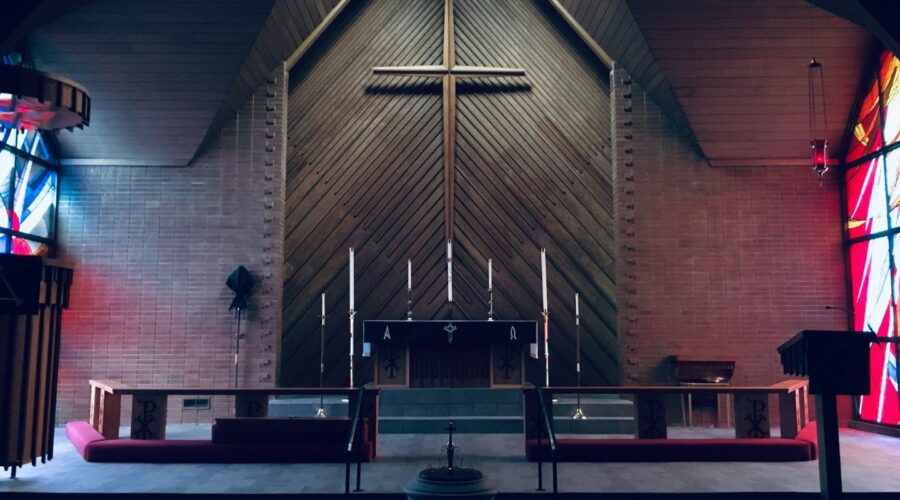
Ahnsahnghong: A Comprehensive Guide
Who is Ahnsahnghong?
Ahnsahnghong (1918-1985) was a South Korean religious leader and the founder of the World Mission Society Church of God (WMSCOG). He claimed to be the Second Coming of Christ and the embodiment of the Holy Spirit. Ahnsahnghong’s teachings deviated significantly from traditional Christian beliefs, leading to accusations of heresy and the establishment of a new faith movement.
Early Life and Career
Born in Milyang, South Korea, Ahnsahnghong’s early life was marked by poverty and hardships. He received little formal education but developed a deep interest in spirituality. In 1945, he accepted Christianity and became a devout member of the Seventh-day Adventist Church.
Founding of WMSCOG
In the late 1950s, Ahnsahnghong began to question certain Adventist doctrines, particularly the concept of the Trinity. He gathered a small group of followers and established the WMSCOG in 1964, claiming to have received direct revelations from God.
Teachings and Beliefs
Ahnsahnghong’s teachings centered around the following key beliefs:
* New Covenant: He believed that Jesus established a New Covenant through his crucifixion and resurrection, replacing the Old Covenant of the Law.
* Restored Passover: He claimed that the true Passover lamb was the bread and wine of the Last Supper.
* Heavenly Mother: He identified the Holy Spirit as the female personification of God, referred to as Heavenly Mother.
* Literal Sabbath: He emphasized the importance of observing the Sabbath on the seventh day of the week, from Friday sunset to Saturday sunset.Controversies and Accusations
Ahnsahnghong’s teachings and practices drew severe criticism and accusations of heresy from mainstream Christian denominations. He was accused of:
* Denying the Trinity
* Redefining the role of the Holy Spirit
* Establishing a cult-like organization
* Misinterpreting ScriptureOrganization and Growth
Despite the controversies, WMSCOG grew rapidly under Ahnsahnghong’s leadership. He established a global network of churches and missionaries, spreading his teachings to various countries. The church claims to have millions of members worldwide.
Death and Succession
Ahnsahnghong died in 1985 at the age of 67. His wife, Zahng Gil-jah, succeeded him as the leader of WMSCOG. She continued to spread Ahnsahnghong’s teachings and oversaw the church’s further growth.
Legacy
Ahnsahnghong’s teachings and movement have had a lasting impact on religious thought and spirituality. His followers believe that he fulfilled the prophecies of the Second Coming of Christ, while critics view him as a false prophet. The controversy surrounding his legacy continues to this day.
Table of Ahnsahnghong’s Key Beliefs
| Belief | Explanation |
|—|—|
| New Covenant | Jesus established a New Covenant through his crucifixion and resurrection. |
| Restored Passover | The bread and wine of the Last Supper are the true Passover lamb. |
| Heavenly Mother | The Holy Spirit is the female personification of God. |
| Literal Sabbath | The Sabbath must be observed from Friday sunset to Saturday sunset. |Additional Resources
* World Mission Society Church of God Official Website
* Ahnsahnghong Information
* Anti-Cult Information on Ahnsahnghong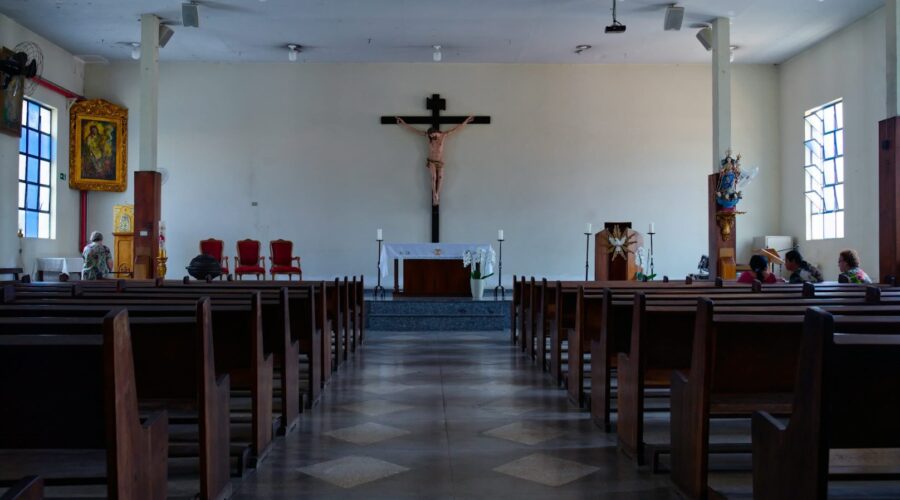
Unveiling the Symbolism and Significance of the Three Crosses
“`html
The Crucifixion and its Historical Context
The crucifixion is a deeply symbolic event in Christianity, representing the ultimate sacrifice of Jesus Christ for the redemption of humankind. On the day of the crucifixion, three crosses were erected on Golgotha, a hill outside the city of Jerusalem.
- The Central Cross: Upon it hung Jesus Christ, the Son of God.
- The Left Cross: Carried a convicted criminal, referred to as the “penitent thief” or “the good thief.”
- The Right Cross: Bore another criminal, known as the “impenitent thief” or “the evil thief.”
The Symbolism of the Three Crosses
The Central Cross: Jesus Christ
The central cross represents the sacrifice and triumph of Jesus Christ. Through his death on the cross, he bore the sins of the world and conquered death. The resurrection of Jesus on the third day symbolized the triumph of life over death and the hope of eternal life for all who believe in him.
The Left Cross: The Penitent Thief
The penitent thief represents the possibility of redemption even in the darkest of times. Despite being a criminal, he recognized Jesus’ divinity and asked for his forgiveness. Jesus promised that the thief would join him in paradise, demonstrating the transformative power of faith and repentance.
The Right Cross: The Impenitent Thief
The impenitent thief represents the consequences of rejecting God’s offer of salvation. He mocked Jesus and refused to repent of his sins. His fate serves as a warning against the dangers of hardening one’s heart to God’s love.
Historical and Cultural Significance
The three crosses have become iconic symbols of Christianity, representing the story of the crucifixion and its profound theological implications. Throughout history, the three crosses have been depicted in art, literature, and architecture, serving as reminders of the sacrifice of Jesus Christ.
Culture Significance Catholicism Venerated as a symbol of Christ’s sacrifice and the hope of salvation. Orthodox Christianity Represented in icons and frescoes, emphasizing the theological significance of the event. Art and Literature Depicted as a powerful allegory, inspiring countless works of art and literature. Personal and Spiritual Reflections
The three crosses offer profound insights into the nature of God, humanity, and the possibility of redemption. They remind us:
- Of the great sacrifice that Jesus made for us.
- That even in the darkest of times, there is hope for redemption.
- Of the importance of accepting God’s love and forgiveness.
- That our choices have eternal consequences.
As we contemplate the three crosses, may we be filled with gratitude for God’s love, compassion, and the hope of eternal life that he offers through Jesus Christ.
“`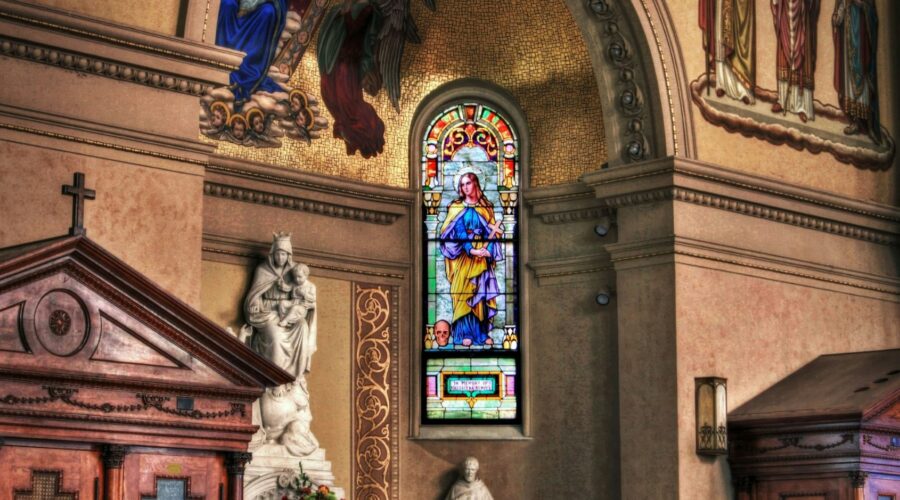
Unveiling the Divine Abode: A Comprehensive Guide to St. Charbel Church
St. Charbel Church, a testament to faith and spiritual enlightenment, stands as a beacon of hope and tranquility in the bustling city. This sacred sanctuary, dedicated to the revered Saint Charbel Makhlouf, invites all to seek solace, guidance, and a deeper connection with the divine.
History and Significance
The genesis of St. Charbel Church can be traced back to the early 20th century. Inspired by the extraordinary life and miracles of Saint Charbel, a group of Lebanese immigrants embarked on a mission to establish a church in his honor. With unwavering determination and the support of their community, they laid the foundation stone in 1964.
The church’s construction was a labor of love, spanning several years. Every stone, every intricate mosaic, bears witness to the unwavering faith and dedication of its builders. Finally, in 1978, the church was consecrated and opened its doors to the public, becoming a spiritual haven for the Lebanese community and beyond.
Architectural Marvel
St. Charbel Church is an architectural masterpiece that seamlessly blends traditional Lebanese and modern elements. Its exterior facade, adorned with intricate carvings and colorful tiles, reflects the rich cultural heritage of its builders. The interior, vast and awe-inspiring, exudes an aura of serenity and grandeur.
Intricate Mosaics and Stained Glass
The church’s interior is adorned with breathtaking mosaics that depict biblical scenes and the life of Saint Charbel. These intricate artworks, created by skilled Lebanese artisans, add depth and vibrancy to the space. The stained glass windows, casting multicolored hues upon the congregation, create a mesmerizing atmosphere of reverence and contemplation.
Soaring Dome and Arched Ceilings
The centerpiece of the church is its majestic dome, reaching towards the heavens. Its intricate tilework and golden accents add a touch of opulence, while the arched ceilings create a sense of spaciousness that invites worshippers to feel the presence of the divine.
Holy Relics and Shrines
St. Charbel Church is not only a sanctuary for prayer but also the custodian of priceless holy relics and shrines.
Relics of Saint Charbel
The church houses a fragment of the relics of Saint Charbel, a tangible reminder of his earthly presence. These relics are displayed in a beautiful shrine, where devotees can pay homage and seek his intercession.
Shrine of Our Lady of Lebanon
Nestled within the church is a shrine dedicated to Our Lady of Lebanon. This sacred space features a statue of the Virgin Mary and is a popular destination for pilgrims seeking her blessings and protection.
Devotional Practices and Services
St. Charbel Church is a dynamic hub for spiritual growth and community engagement. Regular masses, devotions, and prayer services provide opportunities for worshippers to deepen their faith and connect with fellow believers.
Divine Liturgy
The heart of the church’s liturgical life is the Divine Liturgy, celebrated daily and on Sundays. This sacred service, rooted in the Eastern Christian tradition, includes readings from Scripture, prayers, and the reception of Holy Communion.
Novenas and Devotions
St. Charbel Church hosts regular novenas and devotions dedicated to various saints and feast days. These special services provide a time for focused prayer, intercession, and spiritual reflection.
Community Outreach
Beyond its liturgical practices, St. Charbel Church is actively involved in serving the community. Through outreach programs, the church provides support to the needy, promotes interfaith dialogue, and fosters a spirit of love and unity.
Visiting St. Charbel Church
Visiting St. Charbel Church is an enriching experience that offers a glimpse into the heart of the Lebanese Catholic community. Here are some practical details to help you plan your visit:
Location and Contact Information
* Address: 6202 Broadway St, Brooklyn, NY 11206
* Phone: (718) 282-5295
* Email: [email protected]Mass and Service Times
* Check the church’s website or contact them directly for the most up-to-date mass and service times.
Parking
* Limited street parking is available around the church, but it is advisable to consider public transportation or ride-sharing services for convenience.
Dress Code
* While a specific dress code is not enforced, visitors are encouraged to dress respectfully, covering their shoulders and knees.
Accessibility
* The church is wheelchair accessible and provides ramps and elevators for ease of access.
As you step into the hallowed halls of St. Charbel Church, prepare to be enveloped in an atmosphere of peace, reverence, and spiritual enlightenment. May your visit be filled with blessings, guidance, and a renewed connection to the divine.

John Chrysostom: Golden-Mouthed Preacher and Saint
John Chrysostom, also known as John of Antioch, was a prominent theologian, archbishop, and preacher in the early Christian Church. Renowned for his eloquent sermons and unwavering faith, he earned the title Chrysostom, meaning “golden-mouthed,” a testament to his exceptional oratory skills. This comprehensive blog post explores the life, teachings, and legacy of John Chrysostom, providing an in-depth understanding of one of Christianity’s most influential figures.
Early Life and Education
John Chrysostom was born in Antioch, Syria, around 347 AD. His father, Secundus, was a high-ranking military officer, while his mother, Anthusa, was a devout Christian. Growing up in an affluent and cultured environment, John received a first-rate education in rhetoric, philosophy, and theology.
Education and Literary Influences
- Studied under the renowned pagan rhetorician Libanius
- Influenced by Greek classics, particularly Plato and Aristotle
- Thoroughly familiar with the Old and New Testaments
Conversion to Christianity
Initially pursuing a successful career as a lawyer, John underwent a profound conversion experience around the age of 25. Deeply affected by the writings of the Desert Fathers, he withdrew to a nearby desert monastery, where he spent several years in prayer, meditation, and study.
Baptism and Asceticism
Baptized by Bishop Meletius in 368 AD, John embraced an ascetic lifestyle
- Practiced celibacy and fasting
- Committed to poverty and humility
Priesthood and Preaching
In 386 AD, John returned to Antioch and was ordained as a priest by Bishop Flavian. His exceptional preaching abilities quickly gained him recognition throughout the city.
Characteristics of Chrysostom’s Preaching
- Clear and eloquent language
- Use of vivid imagery and allegories
- Practical application of Biblical principles
- Emphasis on the importance of morality, charity, and humility
Archbishop of Constantinople
In 398 AD, Emperor Arcadius appointed John Chrysostom as Archbishop of Constantinople, the capital of the Eastern Roman Empire. This appointment marked a turning point in his life, bringing both great opportunities and challenges.
Ministry in Constantinople
- Established hospitals and almshouses for the poor
- Preached against corruption and social injustice
- Reformed the clergy and monastery system
Controversies and Exile
Chrysostom’s reforms and outspoken criticisms of the imperial court and Empress Eudoxia aroused opposition. In 403 AD, he was deposed on charges of treason and exiled to Cucusus, a remote outpost in Armenia.
Causes of Conflict
- Condemnation of Empress Eudoxia’s extravagance
- Refusal to yield to political pressure
- Threats against the imperial court’s authority
During his exile, Chrysostom remained steadfast in his faith, writing numerous letters and homilies that inspired and encouraged his followers.
Death and Canonization
In 407 AD, Emperor Theodosius II recalled Chrysostom from exile, but he died shortly after his return to Constantinople. He was canonized as a saint by the Orthodox Church, and his feast day is celebrated on September 13th.
Legacy and Impact
John Chrysostom’s legacy as a theologian, preacher, and ascetic continues to inspire and shape Christian thought and practice today.
Writings and Homilies
Chrysostom’s prolific writings include sermons, commentaries, and letters that offer a wealth of insights into early Church history and Christian doctrine.
Theological Contributions
- Emphasis on the importance of the sacraments and liturgy
- Defense of the Nicene Creed
- Proponent of the doctrine of the Holy Trinity
Influence on Church Tradition
- His writings have shaped the liturgical practices and teachings of both the Eastern and Western Churches
- Recognized as one of the four great Doctors of the Church in the Roman Catholic tradition
- Venerated as a patron saint of preachers and orators
Conclusion
John Chrysostom, the “Golden-Mouthed Preacher,” was a towering figure in early Christianity whose teachings and legacy continue to resonate today. Through his eloquent sermons, unwavering faith, and tireless advocacy for the poor and oppressed, he left an enduring mark on the Church and the world. His writings and theological insights continue to provide guidance and inspiration for Christians of all denominations, making him an enduring symbol of the transformative power of the Gospel.
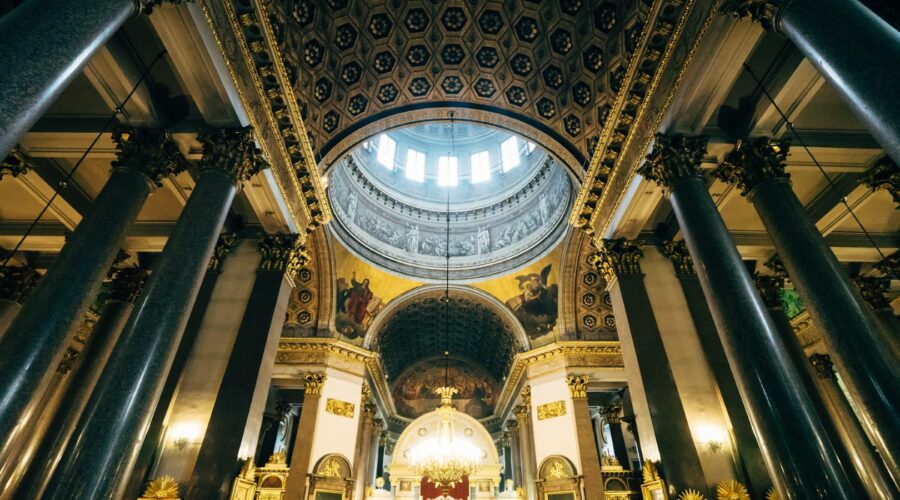
Creflo Dollar’s World Changers Church International: A Comprehensive Guide
“`html
Welcome to World Changers Church International (WCCI), the prominent megachurch led by Bishop Creflo Dollar. Established in 1986, WCCI has grown into a global ministry with a significant impact on the Christian community. Here’s a comprehensive overview of Creflo Dollar’s church:
History and Mission
Humble Beginnings
In 1986, Creflo Dollar launched WCCI in the basement of his home in College Park, Georgia. With a small group of followers, he began sharing his teachings on faith, prosperity, and personal growth.
Exponential Growth
Over the years, WCCI experienced remarkable growth, expanding its reach through television broadcasts and global outreaches. Today, the church has a global network of over 200 affiliate churches and ministry locations.
Beliefs and Teachings
Foundation in the Bible
WCCI’s teachings are deeply rooted in the Bible, with a strong emphasis on faith, prosperity, and victorious living. Dollar teaches that believers have the potential to experience God’s blessings and breakthrough.
Prosperity Gospel
Creflo Dollar is known for his teachings on the prosperity gospel, which emphasizes that God desires His followers to prosper financially and materially. However, he also stresses the importance of using wealth to bless others.
Church Structure and Leadership
Senior Pastor: Bishop Creflo Dollar
As the founder and senior pastor, Bishop Creflo Dollar provides spiritual guidance and leadership to WCCI. He is known for his dynamic preaching style and his ability to inspire and motivate his congregation.
Associate Pastors and Staff
Dollar is supported by a team of associate pastors and staff who assist with preaching, administration, and various ministry programs. These leaders play a vital role in the day-to-day operations of the church.
Ministries and Outreach
Global Missions
WCCI is actively involved in global outreach, reaching out to communities in Africa, Asia, and Central America. The church provides humanitarian aid, disaster relief, and support for local churches in these regions.
Media Outreach
Dollar’s teachings are widely disseminated through television broadcasts, radio programs, and online platforms. His “Changing Your World” program is broadcast in over 190 countries, reaching millions of viewers worldwide.
Controversies
Creflo Dollar and WCCI have faced some controversies over the years, primarily related to their teachings on prosperity and the use of church funds to support the pastor’s lavish lifestyle. However, the church has maintained that its practices are consistent with biblical principles and that it uses its resources to advance the kingdom of God.
Conclusion
Creflo Dollar’s World Changers Church International is a significant player in the Christian landscape, with a global reach and a message of faith, prosperity, and victorious living. While the church has faced some controversy, it continues to draw large crowds and inspire countless people worldwide.
“`